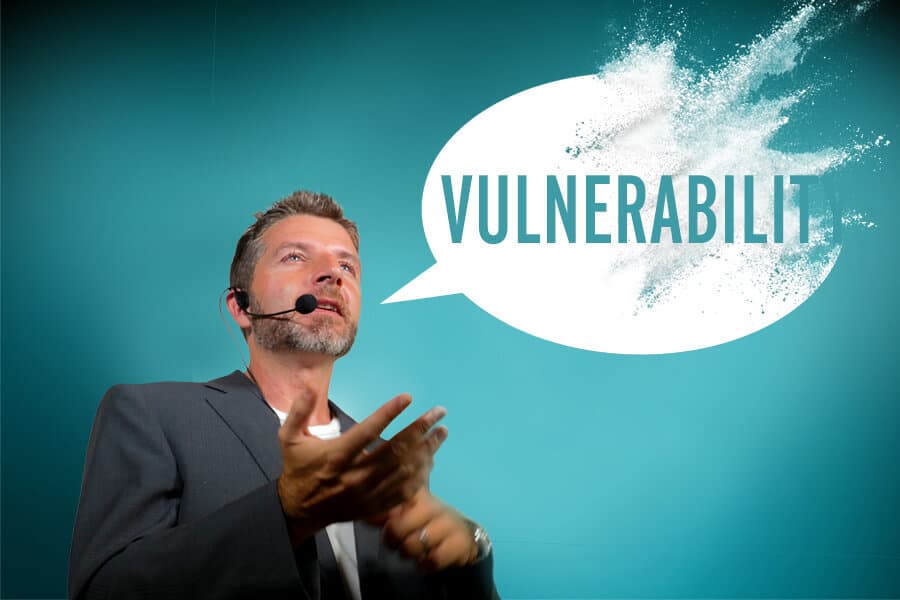In contemporary sources on communication strategies and techniques, the main emphasis is usually placed on the strong features of a speaker. For instance, a speaker should obtain a certain level of confidence, be assertive, charismatic, should have a good body language, and generally be perfectly prepared. These techniques can really be effective and relevant in the field of communication but it is often the case the audience doesn't get persuaded, or motivated by the conveyed message. Keep reading if you are curious to know what is the secret ingredient of truly effective communication, which you can apply starting from your everyday chats with closed ones to the greatest public speeches in history.
The realistic problems we all face
It is a common belief that in order to persuade or inspire the audience, a speaker should be confident, powerful and perfect in all aspects (organization, delivery, communication process, etc.). However, in reality, it is evident that even the most proficient speaker may encounter particular field-related problems, have personal issues, or simply be stressed. Surveys show that 76 percent of experienced speakers have stage fright every time they are about to perform. This means that the vast majority of people share the experience of having the same negative emotions like fear, anxiety, and stress towards public speaking.

Similar to the negative experience with public speaking, we do share-alike feelings about other things like worrying about passing exams, finding a good job, trying to stay both social and hard-working, maintaining good reports, and pursuing personal goals at the same time. We are also very much aware of the things we are not good at and of our flaws, and we try to work on them. Therefore, subconsciously we all know that there is room for imperfection and that it is a natural part of humanity.
Based on this, when we face a speaker, who tries, with the help of the before mentioned tools of persuasion, to build an image of perfection and flawlessness, we can feel fakeness. Moreover, research (Brown, Brene. “The power of vulnerability” TEDx, 12 June 2010, Houston, Texas, USA) shows that people are unable to avoid feelings selectively. This means that by trying to hide all the negative feelings, we simultaneously numb all the other internal feelings, which can be warmth, empathy, positivity, etc., which are also crucial in any form of communication. The result of such behavior affects the effectiveness of the speech due to the fact that the audience can become more distant, feel the lack of authenticity and naturalness.
Vulnerability as a perfect tool to connect
Another tool that is discussed less but, perhaps, has a more powerful effect in the establishment of deep connection with the audience and, therefore, the successful basis for further communication, is vulnerability – “uncertainty, risk and emotional exposure” (Brown “Daring Greatly” ). In other words, vulnerability is an ability to embrace own imperfections and show them in order to achieve connection with the audience.
However, vulnerability is usually perceived as a weakness, over-sharing, or tarnishing of own image, and not frequently used. That is why it is vital to understand that the key point in the effectiveness of vulnerability is the fact that some people in the audience may struggle with the exact same problems as the speaker, they may have similar experience and feelings and that is how they are able to relate and connect. Since the decisive thing that defines the quality of a speech is how sincere and authentic the speaker is, which can be revealed through showing vulnerability, vulnerability is not a weakness but rather a strength, which can ensure the communication between the speaker and the audience on a deep and genuine level.
Be careful!
Presenting a vulnerable side is one of the most powerful tools a speaker can employ. However, according to Brown, as anything powerful, it should be handled with care. “[i]n the case of formulaic or contrived personal sharing, the audience may feel manipulated and hostile toward a speaker and the respective message”, which leads to a completely reverse reaction than expected, namely disconnection. Therefore, a certain threshold should be drawn between vulnerability and aspects which exceed the boundaries of the notion.

Initially, vulnerability is not over-sharing or providing too much information, nor is it a self-marketing tactic. On the contrary, this tool requires boundaries, without which, it becomes nothing but an obvious attempt to connect and seek attention. It is about genuinely sharing from a place of trust and respect that can be achieved by an examination of own intentions. That is to say, the evaluation of whether sharing is done only for the sake of a cultivated image or it is dedicated to reach the audience on a deeper level, creating an emotional bond.
The best way to implement vulnerability
Once the exact threshold is drawn and the speaker is aware of the effect of the vulnerability implementation, the following stage comes into place – realization. Due to the fact that vulnerability is a rather delicate and personal aspect, it requires a certain type of sharing, namely personal story – narrative relating a personal experience. Due to simplicity and linear structure, storytelling was and still is the most comprehensive and easy way to follow, understand, and remember a message, immersing in the thoughts and emotions of the speaker. “Stories have a particularly strong impact on people. In fact, the audience will often remember first the story.” (The Charisma Myth: How Anyone Can Master the Art and Science of Personal Magnetism, Olivia Fox Cabane). Therefore, it is no surprise that the majority of speakers, nowadays, prefer to communicate their ideas with the ‘natural’ usage of storytelling in order to ensure that their attention is held. However, a speaker should be cautious about the fact that some stories can come over as arrogant or even manipulative, similarly to vulnerability itself. Therefore, the authenticity and reality of the story is the core of its influence on the audience.
One of the most illustrative examples of successful vulnerability implementation through personal storytelling can be the speech by an American surgeon and writer Sherwin Nuland in 2013, which was delivered at the TED Talks conference, giving a general insight into the topic of electroshock therapy. His main purpose was to motivate and persuade the conference participants and online viewers to keep fighting and never give up, irrespective of what adversity a person encounters in their lives. Apart from using such well-known techniques for public speaking as body language, intonation, as well as usage of statistics and terminology related to the topic, Nuland had one distinguishable feature, namely, the revelation of his own vulnerability, incorporated as an integral element of a personal story he tells.
Detailed analysis of the example

Nuland opened his speech in a very confident and clear tone, adding humor, in order to engage and maintain his audience’s interest, as well as evoke their sympathy. The introduction provides an informative insight into the topic, background information with historical dates and facts about electroshock therapy, and the early stage of its development. As a result, the speaker creates an image of a knowledgeable and confident person in a witty manner. However, the cultivated image changes as soon as Nuland reasons out his choice of the topic.
“The reason really is that I am a man who, almost thirty years ago had his life saved by two long courses of electroshock therapy.”
This statement immediately shifts the perspective of Nuland as a narrator from a more distant position of a successful, knowledgeable, clinical professor to a person, a patient in particular, as a presupposition, who went through the whole process of the therapy on his own, consequently, the audience can comprehend how hard it was for him.
He continues with a detailed story, revealing the most vulnerable part of his life, which, in addition, has been so far unknown to his audience. As a result, instead of a witty, informed man, overconfidence, and seemingly perfect life, which may be off-putting to some people, the audience is presented with a real, vulnerable man, who like the majority of them have problems and who have managed to recover. Due to the revelation of his true self and not being afraid to show his most vulnerable side, as well as a description of his rehabilitation, Nuland’s message becomes trustworthy. The data, statistics, historical facts, and dates mentioned above are no longer worth considering because an example of a person who went through this is the speaker himself.
Throughout the speech, the speaker openly presents himself to the audience as vulnerable, honest, truthful, and fully reliable. On the psychological level, this openness has a huge influence on the creation of a bond with the audience and serves as a powerful confirmation of the speaker’s message. Nuland closes his speech with the main idea of the whole story, which becomes persuasive and effective with the help of implemented vulnerability.
“If I, with the bleakness of spirit, with no spirit, that I had in the 1970s and no possibility of recovery, as far as that group of very experienced psychiatrists thought, if I can find my way back from this, believe me, anybody can find their way back from any adversity that exists in their lives.”
As a result, the speech is sure not only to affect listeners emotionally but also to help the communication and speaker-listener relation happen, via the use of vulnerability, as well as to break the distance between parties, which leads to a successfully conveyed message.
All of this happens due to a simple truth that each person subconsciously knows about the natural imperfection of human beings. In this case, while trying to create an image and hiding the real self, a speaker risks losing the audience’s trust, which will lead to communication issues. However, once the imperfections are presented in a smart and appropriate way, they may become a speaker’s distinguishable feature and a reason for admiration. Hence, vulnerability may serve as a connecting point and a solid basis for further development of the communication process.
Photos: Shutterstock / Photomontages: Martina Advaney
Read more on the secrets of effective communication:
Support us!
All your donations will be used to pay the magazine’s journalists and to support the ongoing costs of maintaining the site.
Share this post
Interested in co-operating with us?
We are open to co-operation from writers and businesses alike. You can reach us on our email at cooperations@youthtimemag.com/magazine@youthtimemag.com and we will get back to you as quick as we can.









